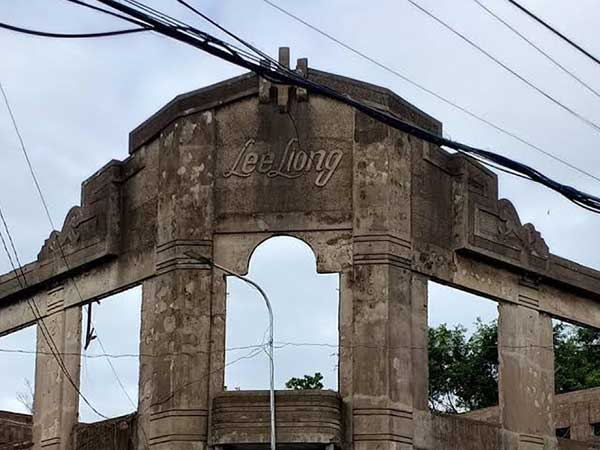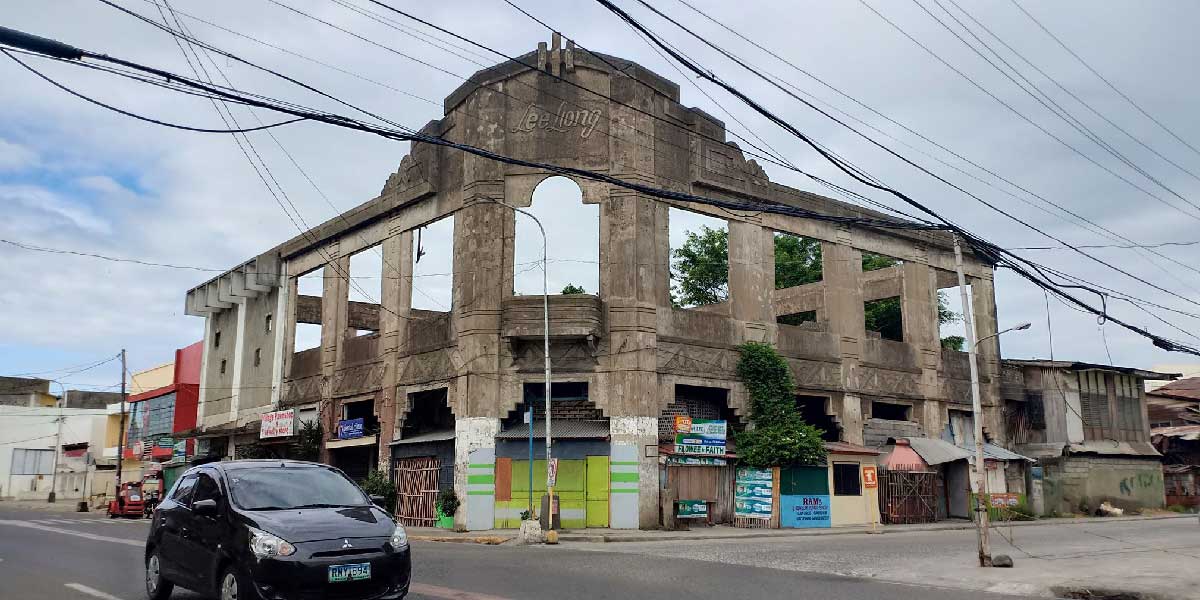
Passing by Roxas Avenue, one could not help but sigh at the sight of the deserted building that the locals call Lee Liong.
This is the oldest surviving pre-war building in the city’s business district and the only art deco structure in the city center.
It definitely merits restoration or at least a decent sprucing up. However, the property is in the private hands and has been untouched since it has fallen over protracted court battles involving two families and the state.
The property was originally owned by the landed Dinglasan family. In March 1936, they sold this 1,574-square meter property on the junction of what is now Roxas Avenue and Pavia Street to Lee Liong, a Chinese citizen for P6,000.00.
The immigrant then built the concrete art deco building which he used both as a commercial and residential structure. The ground floor was used for his lumber business, while the upper floor served as his family’s home.

In February 1944, Lee Liong died, and the property passed on to his widow Ang Chia, and his sons Lee Bing Hoo and Lee Bun Ting. The family, however, waited until 1947 before they divided the property.
In 1948, Rafael Dinglasan and his family filed a case against Lee’s widow and his children to recover the ownership of the property, including damages amounting to P1,000 a month.
The Dinglasans contended that the sale was conditional and they had the right to repurchase it during the last years of a ten-year period. However, the courts found that the sale was an absolute one.
The Dinglasans further contended that the sale was null and void since Lee Liong was a foreigner and that ownership of a property by an alien violated the provisions of the Constitution (Article XIII, section 5).
However, in 1956, the Court found that Lee Liong was not aware of that constitutional prohibition, while the Dinglasans knew about it because one of the sellers, Judge Rafael Dinglasan, was then an assistant attorney in the Department of Justice, yet they did not inform Lee about it at the time of the sale.
The case reached the Supreme Court but the Dinglasans’ claims were dismissed.
The Dinglasans did not give up. In 1968, they filed an action for recovery citing the same reasons that the sale violated the Constitution. Once again, the case was elevated to the Supreme Court, which dismissed the case. But the court battles did not end there.
In 1993, with the Lee brothers now dead, their respective wives, Elizabeth and Pacita requested for a copy of the tile from the Register of Deeds since the original was burned during the war.
Then another case came about after the Office of the Solicitor General filed for the reversion of the ownership of the property to the public domain, which the lower court affirmed, but the Court of Appeals reverted this decision, declaring the Lees as the “absolute and lawful owners of Lot No. 398.”
It has been explained that if “land is invalidly transferred to an alien who subsequently becomes a citizen or transfers it to a citizen, the flaw in the original transaction is considered cured and the title of the transferee is rendered valid.”
For the case of Lee Liong, while he was an alien barred from owning a property, the transfer of the property to his heirs, who were Filipinos, corrected the flaw in the original transaction. Case solved but the building had already endured decades of neglect.
The Lee Liong Building is the remaining reminder of the belle époque years of Capiz. Strong and proud, while roofless and in pitiful condition today, it survived World War II, typhoons, years of desertion, and nasty lawsuits. On the ground floor, a carinderia and pawnshop still operates, and I could see a makeshift mezzanine was installed by the occupants. But what I lament the most is the fact that the owners failed to step in to tidy up the place.
(Note: This article was reprinted from the Capiz History Book)


















